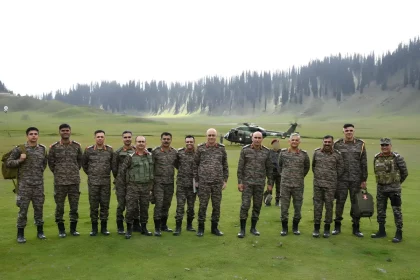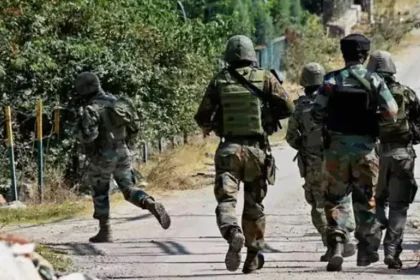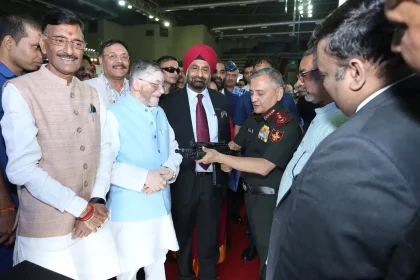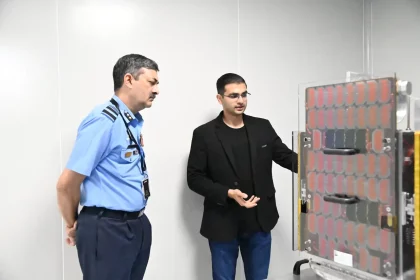Lieutenant General Pratik Sharma Reviews Northern Command’s Counter-Infiltration Grid in North Kashmir
Lt Gen Sharma witnessed a "Battle Enabler" display, showcasing the integration of cutting-edge technologies into the Army’s operations.
Soldier Martyred in Gunfight on Doda-Udhampur Border, 3–4 Jaish Terrorists Trapped
Operation in Dudu-Basantgarh continues as forces tighten cordon; JeM terrorists believed trapped.
Indian Army Pays Homage to Lance Dafadar Bharvad Mehulbhai Mepabhai in Ganderbal
The Northern Command of the Indian Army, under the leadership of Lt Gen Pratik Sharma, paid tribute to Lance Dafadar…
Mumbai Loan Recovery Agent’s Abusive Call to Soldier Sparks Outrage; HDFC Bank Issues Clarification
Derogatory remarks against soldier spark outrage; HDFC Bank denies link to viral loan recovery agent.
Jharkhand Hosts 1st Defence Expo: East Tech Symposium 2025 Showcases Strategic Growth & Industry Integration
Ranchi Emerges as Eastern India’s Defence Hub with Landmark Symposium.
Pixxel Demonstrates Cutting-Edge Satellite Technology to Indian Air Force
Visit underscores India’s push for sovereign space intelligence as Pixxel showcases Firefly constellation, Aurora platform, and upcoming defense payloads.






